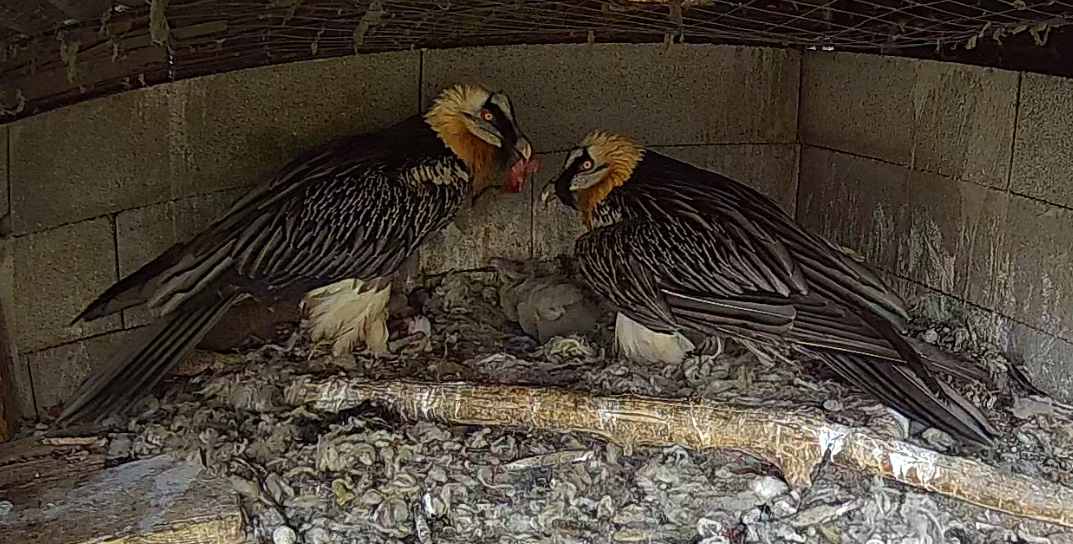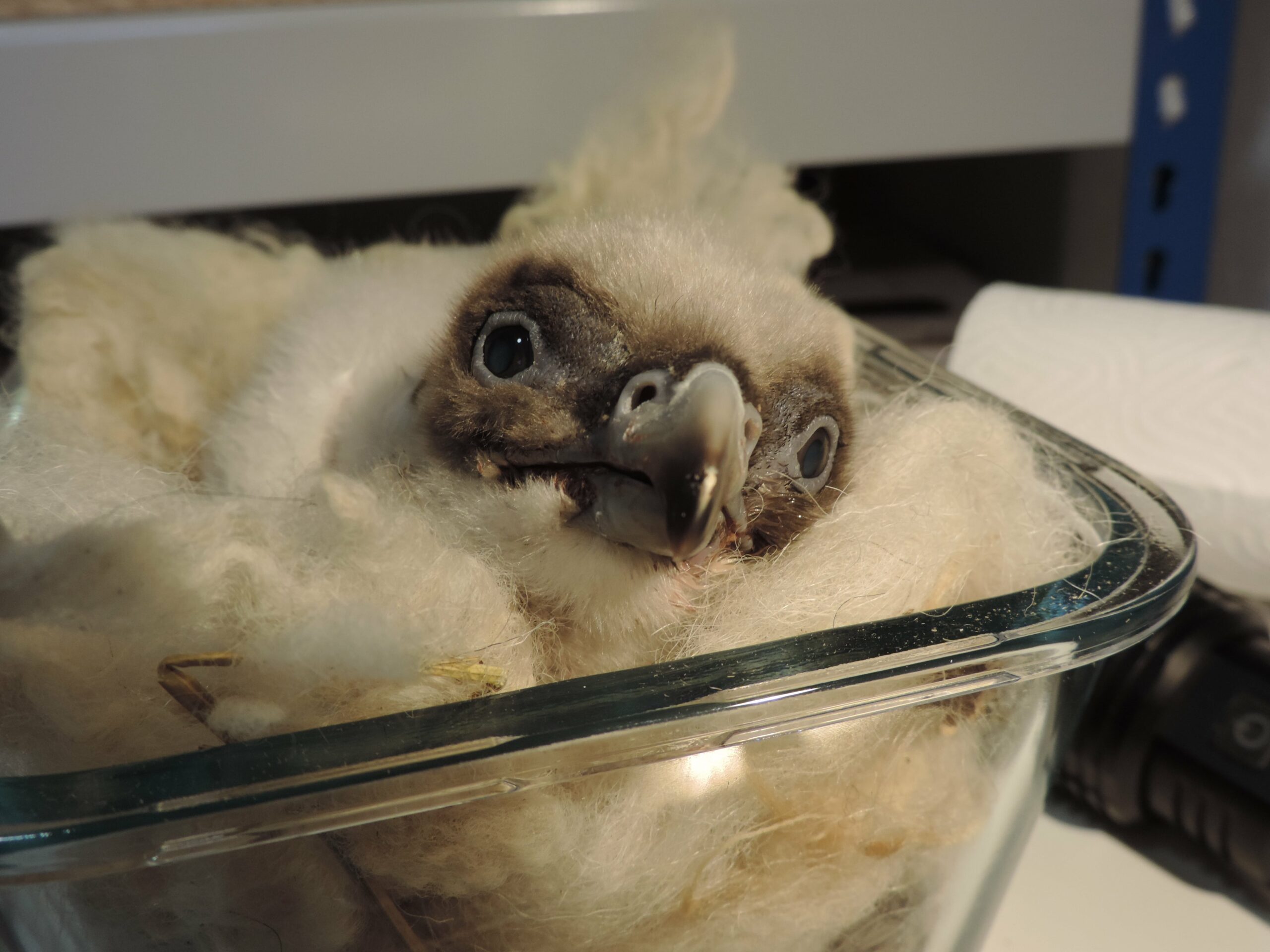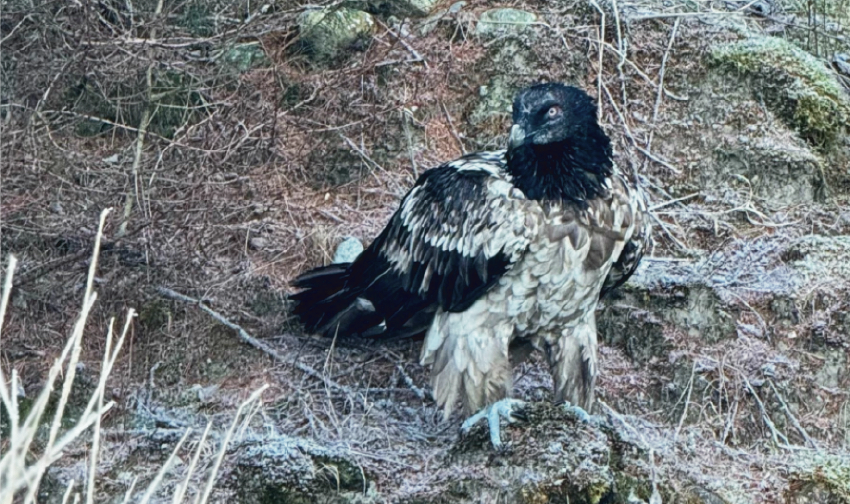It’s not the first time a young Bearded Vulture we are tracking has ventured into unexpected places, but it’s one of the first times, if not the first, the species was sighted in the Friuli region near Udine in Italy. And it wasn’t the only one.

The background of Nepomuk
Nepomuk is one of the Bearded Vultures involved in a ten-year project aiming to reintroduce the species to the Bavarian Alps, thereby expanding the Alpnine population eastward and boosting the genetic diversity in the region. The release of the first two Bearded Vultures, Wally and Berchtesgaden, in 2021, at Berchtesgaden National Park in Bavaria, marked a historic turning point for Germany, where the species had been extinct for over 140 years. In 2022, two more, Dagmar and Recka, were released in the same area. In 2023, Nepomuk, alongside Sisi, became the new Bearded Vultures released in this reintroduction project. The project is the result of a robust collaboration between LBV and Berchtesgaden National Park, with support from the Bearded Vulture Captive Breeding Network, coordinated by us at the Vulture Conservation Foundation (VCF) on behalf of EAZA’s EEP (Bearded Vulture EEP), and the International Bearded Vulture Monitoring Network, also coordinated by the VCF.
Both Nepomuk and Sisi hatched in captivity in Austria: Sisi, the female, hatched in the Alpine Zoo in Innsbruck, while Nepomuk (male) hatched in the Richard Faust Bearded Vulture Breeding Centre in Haringsee, close to Vienna. However, as Nepomuk’s parents laid another egg, and due to cainism (an instinctive behaviour where older siblings kill the young one), only one chick would survive. Therefore, at ten days old, human keepers transported Nepomuk at Nuremberg Zoo, who was welcomed and reared by a foster pair that was unable to breed during the 2022/23 breeding season.
Nepomuk descended from an important lineage and was meant to remain in captivity to ensure the genetic pool within the Bearded Vulture EEP. But BG 1168, which was supposed to be released, showed difficulties in plumage development, and Nepomuk took its place. Before the release of Nepomuk and Sisi, they were equipped with identification rings, and a unique pattern of feathers was bleached to identify them during observations in the wild. Another crucial monitoring aspect of our project to evaluate the progress of the reintroduction process and the birds’ adaptation to the wild is GPS transmitters. These tags allow us to closely and accurately follow the movements and behaviour of released Bearded Vultures in real-time. That’s how we have been able to witness this bird making intriguing movements recently.

Rare observation of Bearded Vultures in Friuli
The Bearded Vulture Nepomuk is among the first to visit the Friuli region near Udine in Italy. The observation of Nepomuk in this region was unexpected, and perhaps even more surprising was that it was not alone. Another Bearded Vulture was sighted in this area, though unmarked, and its origin remains unknown. What’s interesting is that near Udine, in the Riserva Naturale Regionale del Lago di Cornino, there is a feeding site for mainly Griffon Vultures. But so far, none of the Bearded Vultures have visited the feeding site. Nepomuk has also been crossing over to Slovenia and exploring places there quite a bit.
Despite the relative proximity to the Austrian National Park Hohe Tauern, where Bearded Vultures have returned as part of the Alpine reintroduction project, and a small breeding population has been established, Bearded Vultures rarely visit the vicinity. Bearded vultures never stay in the easternmost Italian Alps for more than a few days, and no bird has remained in the area for an extended period. The Eastern Italian Alps serve as a bridge to the Balkan mountains, from where the bearded vulture disappeared last century, and a new project, Bearded Vulture LIFE, aims to reintroduce the species to Bulgaria.

We will continue to monitor the movements of Nepomuk, who not only visited this rare area for the species but are also moving around Slovenia quite a bit! Will the vulture visit other unexpected places?



